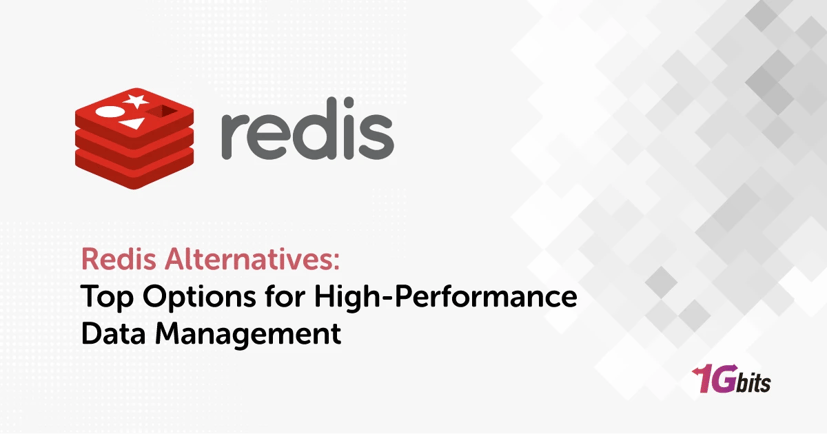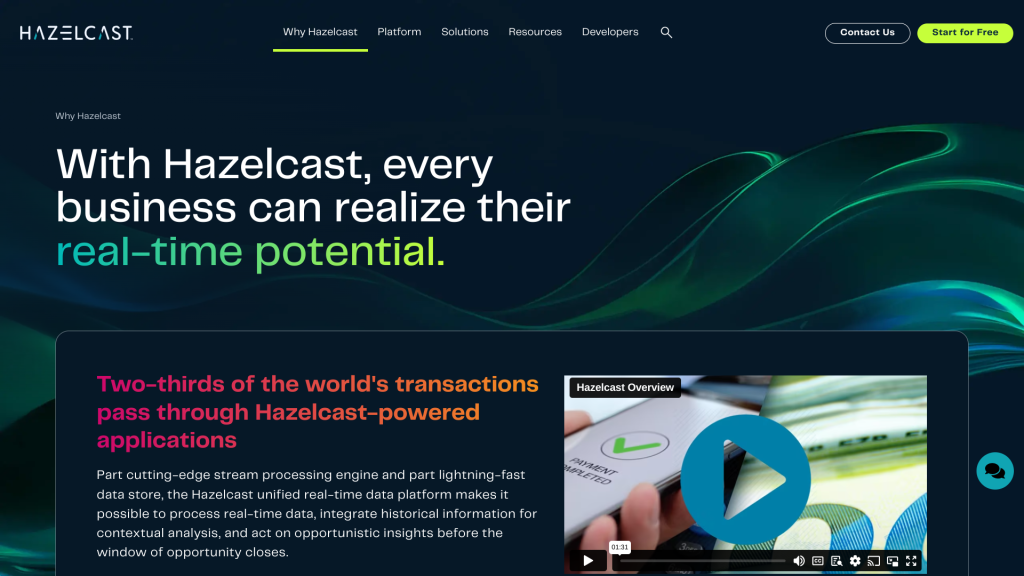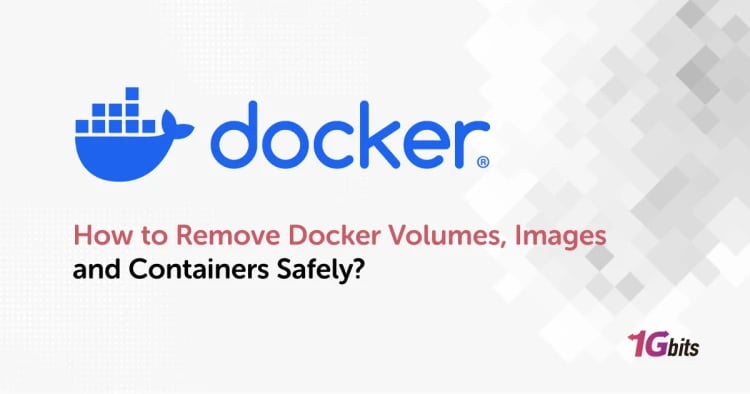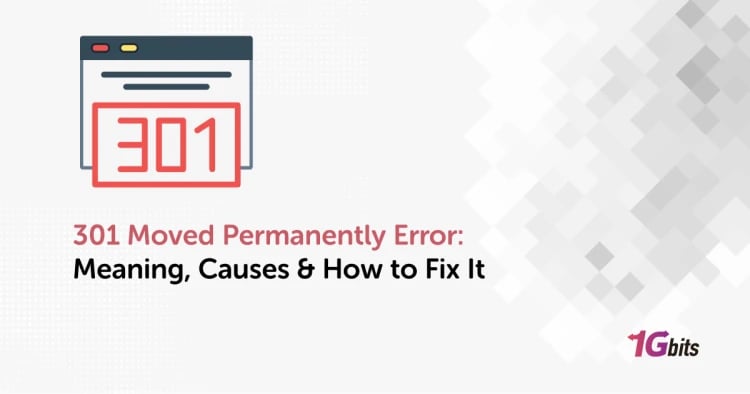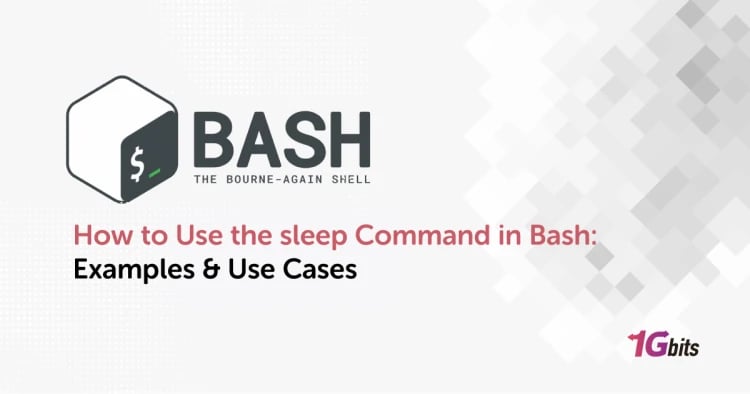When exploring Redis alternatives, it's essential to recognize that while Redis is a powerful in-memory data structure store, it might not always be the best fit for every scenario. Whether you're seeking Redis alternatives for open-source projects, Redis alternatives for Windows environments, or the best Redis alternatives for specific programming needs like python redis alternatives, there are numerous options available. From Socket.IO Redis alternatives to connect-Redis alternatives and Redis alternatives AWS or redis alternatives azure, each provides unique advantages that can better align with your specific requirements. In this discussion, we’ll delve into the top Redis alternatives for caching, free Redis alternatives, and Redis-compatible alternatives that offer flexibility and performance across various platforms, including Windows and cloud environments like redis alternatives in azure and AWS.
How to choose Redis alternatives?
When considering Redis alternatives, it's crucial to identify your specific requirements and constraints, as the right choice can significantly impact your system's performance and reliability. Redis is renowned for its speed and versatility, but there are situations where you might need a different solution due to licensing concerns, platform compatibility, or unique feature requirements. Here’s how to choose the best Redis alternatives for your needs.
Evaluate Open-Source Options
If you're looking for Redis alternatives open source, explore projects like KeyDB, which is a Redis compatible alternative offering multi-threading and better performance in certain scenarios. KeyDB vs Redis comparisons often highlight KeyDB’s advantages in multi-threaded environments, making it a strong candidate if performance is a top priority.
Consider Platform Compatibility
Not all Redis alternatives work seamlessly across all platforms. For instance, if you’re looking for a Redis Windows alternative, Memcached is a solid choice. It’s a free Redis alternative that runs well on Windows and offers a straightforward caching solution, although it lacks some of Redis’s advanced data structures.
Look into Cloud Options
If you’re using AWS, Redis alternatives AWS could include Amazon’s own ElastiCache service, which supports both Redis and Memcached. However, if you're seeking a Redis Amazon alternative outside the Amazon ecosystem, Azure Cache for Redis or Google Cloud Memorystore might be worth considering.
Prioritize Cost-Effectiveness
For many, finding a free Redis alternative is crucial. Apache Ignite is an excellent Redis cache alternatives that offers a rich set of features and is completely free, making it one of the best Redis alternatives free.
Ensure Compatibility
For applications already designed to work with Redis, finding Redis compatible alternatives is key. KeyDB and Dragonfly are both Redis compatible alternatives that support Redis protocols and commands, ensuring a smooth transition with minimal code changes.
By evaluating these factors, you can identify the best Redis alternatives for your project, whether you need something Redis alternatives for Windows, Redis alternatives AWS, or simply a Redis alternatives open source solution that fits your specific needs.
Top 10 Redis alternatives
1. MongoDB
MongoDB is a widely-used NoSQL database that provides a flexible, scalable solution for managing and storing large amounts of unstructured data. Unlike traditional relational databases, MongoDB stores data in a JSON-like format called BSON, allowing for greater flexibility in data modeling. This schema-less structure makes MongoDB an attractive option for developers needing to handle diverse data types without the constraints of predefined schemas.
Document-Oriented Storage
MongoDB stores data as documents, which are akin to JSON objects. This format is highly flexible, enabling developers to store complex, hierarchical data structures without the need for relational mapping.
Scalability
MongoDB excels in horizontal scalability, allowing data to be distributed across multiple servers. This capability is essential for handling large datasets and high-traffic applications, making it a powerful option for those exploring Redis alternatives that require scalability.
Flexible Schema
MongoDB's schema-less architecture allows developers to modify the database structure on the fly. This is particularly beneficial in agile development environments where data models frequently evolve.
High Performance
MongoDB is designed for high throughput and low latency. It supports indexing, aggregation, and in-memory performance features, making it a strong contender when considering Redis alternatives for performance-critical applications.
Rich Query Language
MongoDB offers a powerful query language with support for filtering, sorting, and aggregating data. Its query capabilities are comparable to SQL, providing a familiar experience for developers transitioning from relational databases.
Community and Ecosystem
MongoDB has a robust community and extensive ecosystem, including a range of tools for development, deployment, and monitoring. This extensive support network makes it a reliable choice when evaluating Redis alternatives.
For those looking for Redis alternatives, MongoDB presents a compelling option, especially when flexibility, scalability, and performance are paramount.
2. Firebase
Firebase is a comprehensive platform developed by Google that provides a wide array of tools and services to help developers build high-quality apps. It offers a backend-as-a-service (BaaS) solution, which simplifies the development process by handling many aspects of app creation, including databases, authentication, analytics, and more. Firebase is particularly popular for mobile and web app development.
Real-time Database
Firebase offers a NoSQL database that stores and syncs data between users in real-time. This feature is essential for building collaborative applications like chat apps, gaming leaderboards, and live streaming apps. For developers considering Redis alternatives, Firebase’s real-time database is a strong contender due to its seamless real-time data synchronization across all connected clients.
Authentication
Firebase simplifies user authentication with a fully managed service that supports email, password, and social media logins (Google, Facebook, Twitter, etc.). This makes it easier for developers to implement secure authentication without having to manage the backend.
Hosting
Firebase provides fast, secure, and reliable hosting for static websites, making it a go-to solution for developers who need a one-stop-shop for app deployment. Firebase hosting is globally distributed, ensuring low latency and high availability.
Cloud Firestore
This is an upgraded version of the real-time database with more powerful querying capabilities and better scalability. Developers seeking Redis alternatives for complex querying and offline capabilities might find Cloud Firestore particularly appealing.
Integration with Google Analytics
Firebase integrates seamlessly with Google Analytics, providing detailed insights into user behavior and app performance. This integration is crucial for making data-driven decisions and optimizing app engagement.
For developers exploring Redis alternatives that offer more than just data caching, Firebase stands out with its comprehensive suite of tools designed to accelerate app development and deployment while providing real-time data handling and robust backend services.
3. DynamoDB
DynamoDB is a fully managed NoSQL database service provided by Amazon Web Services (AWS). It is designed for applications requiring high availability, scalability, and low-latency data access. While not a direct replacement for Redis, DynamoDB is often considered among Redis alternatives for its ability to handle large volumes of data with minimal management overhead.
Managed Service DynamoDB
It is a managed service, meaning AWS takes care of administrative tasks such as provisioning, patching, and backups. This is a significant advantage for teams looking for Redis alternatives that require minimal operational management, allowing developers to focus on building applications rather than maintaining the infrastructure.
2. Scalability
DynamoDB automatically scales to handle any amount of traffic. Its ability to scale horizontally with zero downtime is one of the reasons it's often considered among the best Redis alternatives for applications with unpredictable or spiky workloads.
Performance
DynamoDB is optimized for high performance, offering single-digit millisecond response times even at scale. This makes it a compelling option among Redis alternatives for applications requiring consistent, low-latency access to data.
Global Tables
DynamoDB offers built-in multi-region replication through its Global Tables feature, enabling applications to achieve low-latency data access across multiple AWS regions. This feature is crucial for organizations considering Redis alternatives that need to support globally distributed users.
Integrated Security
DynamoDB integrates seamlessly with AWS Identity and Access Management (IAM), providing robust security features such as encryption at rest and fine-grained access control. For those evaluating Redis alternatives, DynamoDB's security features make it an attractive option for sensitive or regulated data.
In summary, DynamoDB is a strong candidate among Redis alternatives for its scalability, performance, and managed service features, making it suitable for high-demand applications that require reliable and fast data access.
4. Apache Cassandra
Apache Cassandra is a highly scalable and distributed NoSQL database system designed to handle large amounts of data across multiple servers without any single point of failure. Originally developed by Facebook, Cassandra is now an open-source project under the Apache Software Foundation. It is particularly well-suited for applications that require high availability, fault tolerance, and scalability, making it a strong contender among Redis alternatives for those seeking a more robust data storage solution.
Scalability
One of Cassandra's most important features is its linear scalability. It can handle increased loads simply by adding more nodes to the cluster, with no downtime or interruption of service. This makes it an excellent option for organizations looking for Redis alternatives that can grow alongside their data needs.
Fault Tolerance
Cassandra is designed to be highly fault-tolerant, with no single point of failure. Data is automatically replicated across multiple nodes, ensuring that the system can continue to operate even if individual nodes fail. For those searching for Redis alternatives that prioritize reliability and uptime, Cassandra is a compelling choice.
Decentralized Architecture
Unlike traditional databases that rely on a master-slave architecture, Cassandra uses a peer-to-peer model, where all nodes are equal. This decentralized approach enhances both performance and fault tolerance, making it a great option for those evaluating Redis alternatives for distributed applications.
High Availability
Cassandra is built with high availability in mind, supporting multi-data center replication and ensuring that data is always accessible. For applications that require continuous operation, Redis alternatives like Cassandra can offer the reliability needed.
Flexible Data Model
Cassandra's flexible schema allows for dynamic and varied data types, making it a versatile choice for applications with complex data requirements. This flexibility is another reason why Cassandra is often considered one of the top Redis alternatives for large-scale, data-intensive applications.
5. MySQL
MySQL is a widely-used open-source relational database management system (RDBMS) known for its speed, reliability, and ease of use. As one of the most popular databases in the world, MySQL is the backbone of many web applications, including popular platforms like WordPress, Drupal, and Joomla. It’s often compared to other database systems, such as Redis alternatives, due to its powerful features and extensive community support.
Key Features of MySQL
-
Open-Source and Cross-Platform: MySQL is an open-source database, which means it’s free to use and can be modified to fit specific needs. It’s also cross-platform, supporting various operating systems like Linux, Windows, and macOS, making it a versatile choice compared to other Redis alternatives.
-
High Performance: MySQL is optimized for speed and performance, especially in read-heavy workloads. It’s designed to handle a large number of queries and connections simultaneously, which makes it suitable for applications requiring high availability and scalability. In comparison to Redis alternatives, MySQL shines in scenarios requiring complex queries and transactions.
-
Reliability and Security: MySQL offers robust security features, including data encryption, user authentication, and access controls. These features ensure that data is safe and secure, making MySQL a reliable choice for businesses. When considering Redis alternatives, MySQL’s focus on security is a significant advantage.
-
Rich Ecosystem and Community Support: With a vast ecosystem of tools, libraries, and frameworks, MySQL integrates seamlessly with various programming languages and platforms. The active community around MySQL provides extensive support and resources, which can be a deciding factor when choosing between MySQL and other Redis alternatives.
Advantages of MySQL
-
Cost-Effective: MySQL’s open-source nature makes it a cost-effective solution for businesses of all sizes, offering powerful features without the high price tag, unlike some proprietary Redis alternatives.
-
Scalability: MySQL can scale from small applications to large, data-intensive enterprise environments, making it a flexible choice compared to other Redis alternatives.
-
Comprehensive Documentation: The extensive documentation and active community support make MySQL easy to learn and implement, which is a distinct advantage over many Redis alternatives.Bottom of Form
6. Valkey
Valkey is an innovative distributed caching system designed to provide high-performance, scalable alternatives to Redis. As a Redis alternative, Valkey aims to address specific limitations of Redis while offering advanced features suited for modern applications.
Features
-
High Performance: Valkey delivers exceptional speed and efficiency, making it a strong Redis alternative for applications requiring low-latency access to cached data. Its architecture is optimized for quick retrieval and updates, which helps maintain high performance under heavy load.
-
Scalability: Like Redis, Valkey supports horizontal scaling, allowing you to expand capacity easily by adding more nodes. This scalability is crucial for applications experiencing rapid growth or varying loads, positioning Valkey as a valuable Redis alternative for dynamic environments.
-
Advanced Data Structures: Valkey supports a wide range of data structures similar to Redis, including strings, lists, sets, and hashes. This compatibility makes it an effective Redis alternative for applications that rely on these data structures for complex caching and data manipulation.
-
Cross-Platform Compatibility: Unlike some Redis alternatives that may be limited to specific platforms, Valkey offers robust support across various Redis Windows alternative operating systems and environments, including Windows. This makes it a suitable for users who need a versatile caching solution.
Advantages
-
Enhanced Performance Metrics: Valkey's advanced performance metrics and monitoring tools provide detailed insights into caching operations, offering better visibility and control compared to some Redis alternatives.
-
Seamless Integration: Valkey integrates smoothly with existing Redis-based systems, making it an appealing choice for those seeking a Redis compatible alternative with minimal disruption.
-
Open-Source Flexibility: Valkey is open source, providing the freedom to customize and extend its functionality according to your specific needs, similar to many Redis alternatives open source.
Valkey stands out as a powerful and flexible Redis alternative that combines high performance, scalability, and cross-platform support, making it a compelling option for modern caching needs.
7. Memcached
Memcached is a high-performance, distributed memory object caching system designed to speed up dynamic web applications by alleviating database load. It functions as an in-memory key-value store, making it a popular choice among developers as a Redis alternative for caching data.
Key Features
-
Simple Key-Value Storage: Memcached uses a straightforward key-value pair system, which simplifies data retrieval and storage. This simplicity makes it a viable Redis alternative for applications that require basic caching without the complexity of advanced data structures.
-
Distributed Architecture: Memcached supports horizontal scaling, allowing you to distribute cache across multiple servers. This feature ensures that data retrieval remains fast even as demand grows, positioning it as a robust Redis alternative for large-scale applications.
-
High Performance: Designed for speed, Memcached operates with minimal latency, offering quick access to cached data. This performance advantage makes it a preferred choice for applications that require rapid data access, serving as a competitive Redis alternative.
Advantages
-
Open Source: Memcached is free and open source, making it an attractive Redis alternative for those seeking a cost-effective solution. Its open-source nature ensures broad community support and continuous improvements.
-
Cross-Platform Support: Memcached runs on various operating systems, including Windows, Linux, and macOS. This versatility makes it a suitable Redis alternative for diverse environments.
-
Ease of Integration: With numerous client libraries available, integrating Memcached into existing systems is straightforward. Its compatibility with various programming languages and frameworks enhances its appeal as a Redis alternative.
Overall, Memcached offers a straightforward, high-performance caching solution that can effectively serve as a Redis alternative. Its simplicity, scalability, and cross-platform support make it a valuable tool for improving application performance.
8. Hazelcast
Hazelcast is an in-memory data grid that serves as a powerful alternative to Redis, designed for distributed computing and data management. It provides a highly scalable and fault-tolerant solution, making it suitable for applications requiring high-speed data access and processing.
Key Features
-
Distributed In-Memory Storage: Hazelcast offers a distributed in-memory data store, similar to Redis, but with built-in support for clustering across multiple nodes. This ensures high availability and horizontal scalability, making it a viable Redis alternative for large-scale applications.
-
Data Structures and Caching: Hazelcast supports a variety of data structures such as maps, queues, and sets, akin to Redis. It also provides caching capabilities with distributed caching support, making it a competitive Redis cache alternative.
-
SQL Querying: Unlike Redis, Hazelcast includes SQL querying capabilities for querying data stored in its distributed caches. This feature enhances data retrieval flexibility and is a notable addition to the list of Redis alternatives for scenarios requiring complex querying.
-
Fault Tolerance and Backup: Hazelcast ensures data reliability through built-in replication and backup features. It offers strong consistency and fault tolerance, which are critical for systems where data integrity is paramount. This makes it a robust Redis alternative in terms of reliability.
Advantages
-
Scalability: Hazelcast's architecture supports elastic scaling, allowing you to add or remove nodes without downtime. This scalability feature positions it as a strong Redis alternative, particularly for applications experiencing variable loads.
-
Multi-language Support: Hazelcast provides client libraries for various programming languages, including Java, .NET, and Python. This multi-language support makes it a versatile choice, comparable to Redis alternatives that also offer broad language compatibility.
-
Easy Integration: Hazelcast integrates seamlessly with existing systems and supports a range of deployment options, including cloud environments. This ease of integration is an advantage over some Redis alternatives that may have more complex setup processes.
Overall, Hazelcast presents itself as a comprehensive solution for in-memory data management, offering features and advantages that make it a worthy Redis alternative in many use cases.
9. Key DB
KeyDB is a high-performance, open-source database that serves as a Redis alternative with several advanced features. Designed to be fully compatible with Redis, KeyDB offers additional functionality and optimizations that can enhance its performance in various scenarios.
Key Features of KeyDB
-
Multi-Threading Support: Unlike Redis, which is single-threaded, KeyDB supports multi-threading. This capability allows KeyDB to leverage multiple CPU cores, improving its throughput and performance under high load conditions. This makes it a notable Redis alternative for applications requiring high concurrency.
-
Data Persistence: KeyDB provides robust data persistence options, including AOF (Append Only File) and RDB (Redis Database) snapshots. This ensures that data is reliably saved and can be restored in case of failures, similar to what Redis offers, but with enhanced performance.
-
Advanced Security Features: KeyDB includes built-in TLS/SSL encryption for secure data transmission, a feature that is not available in the standard Redis setup. This makes it a secure Redis alternative for applications where data security is a priority.
-
High Availability and Replication: KeyDB supports high availability through its built-in master-replica replication and failover capabilities. This ensures that data remains accessible even in the event of server failures, making it a reliable Redis alternative for mission-critical applications.
Advantages of KeyDB
-
Enhanced Performance: With its multi-threaded architecture, KeyDB can handle more operations per second compared to Redis, particularly in multi-core environments. This advantage positions it as one of the top Redis alternatives for performance-sensitive applications.
-
Improved Security: The inclusion of TLS/SSL encryption and advanced security features in KeyDB provides enhanced protection for data, offering an edge over Redis in secure environments.
-
Compatibility: KeyDB’s compatibility with Redis commands and protocols ensures that applications designed for Redis can be easily migrated to KeyDB, making it a seamless Redis alternative.
In summary, KeyDB stands out as a powerful Redis alternative due to its multi-threading support, advanced security features, and high availability options. Its ability to provide enhanced performance and security makes it a compelling choice for users seeking Redis alternatives.
10. RethinkDB
RethinkDB is a powerful, open-source database designed for real-time web applications. It provides a flexible and dynamic approach to data management, making it a compelling choice among Redis alternatives for applications that require live updates and seamless scalability.
Real-Time Data Push
One of RethinkDB’s standout features is its ability to push updates to applications in real-time. This makes it an excellent choice for applications where timely data updates are crucial, positioning it as a strong Redis alternative for real-time web apps.
Flexible Query Language
RethinkDB uses a query language called ReQL, which offers a powerful and expressive way to interact with data. This flexibility in querying makes it a valuable Redis alternative for developers who need advanced querying capabilities beyond what Redis offers.
Horizontal Scalability
RethinkDB supports easy horizontal scaling, allowing you to distribute data across multiple servers. This scalability is a significant advantage over traditional Redis alternatives, especially for large-scale applications.
Schema-Free Design
With its schema-free design, RethinkDB enables you to store and manage diverse data types without predefined schemas. This flexibility is advantageous compared to some Redis alternatives, which may require more rigid data structures.
Built-In Fault Tolerance
RethinkDB includes built-in fault tolerance and automatic failover capabilities. This feature ensures high availability and reliability, making it a robust option among Redis alternatives for mission-critical applications.
Community and Support
Despite being discontinued, RethinkDB has a strong community and extensive documentation, providing valuable resources and support. This community backing can be a deciding factor when evaluating Redis alternatives.
In summary, RethinkDB offers real-time updates, flexible querying, horizontal scalability, a schema-free design, fault tolerance, and robust community support. These features make it a noteworthy Redis alternative for various use cases.
Conclusion
When exploring Redis alternatives, it’s essential to consider specific needs such as real-time data handling, scalability, and cost. RethinkDB offers real-time updates and flexible querying, making it a strong choice for applications needing dynamic data. KeyDB stands out with its multi-threading capabilities, enhancing performance in concurrent environments, while Memcached provides a straightforward, free option for caching. For those in the cloud, Amazon ElastiCache and Azure Cache for Redis offer managed services compatible with Redis. Each Redis alternative brings unique strengths, from Redis alternatives open source solutions to cloud-based options, ensuring there is a suitable choice for various use cases. Evaluating these options based on your project requirements will help you find the best fit among Redis alternatives.

